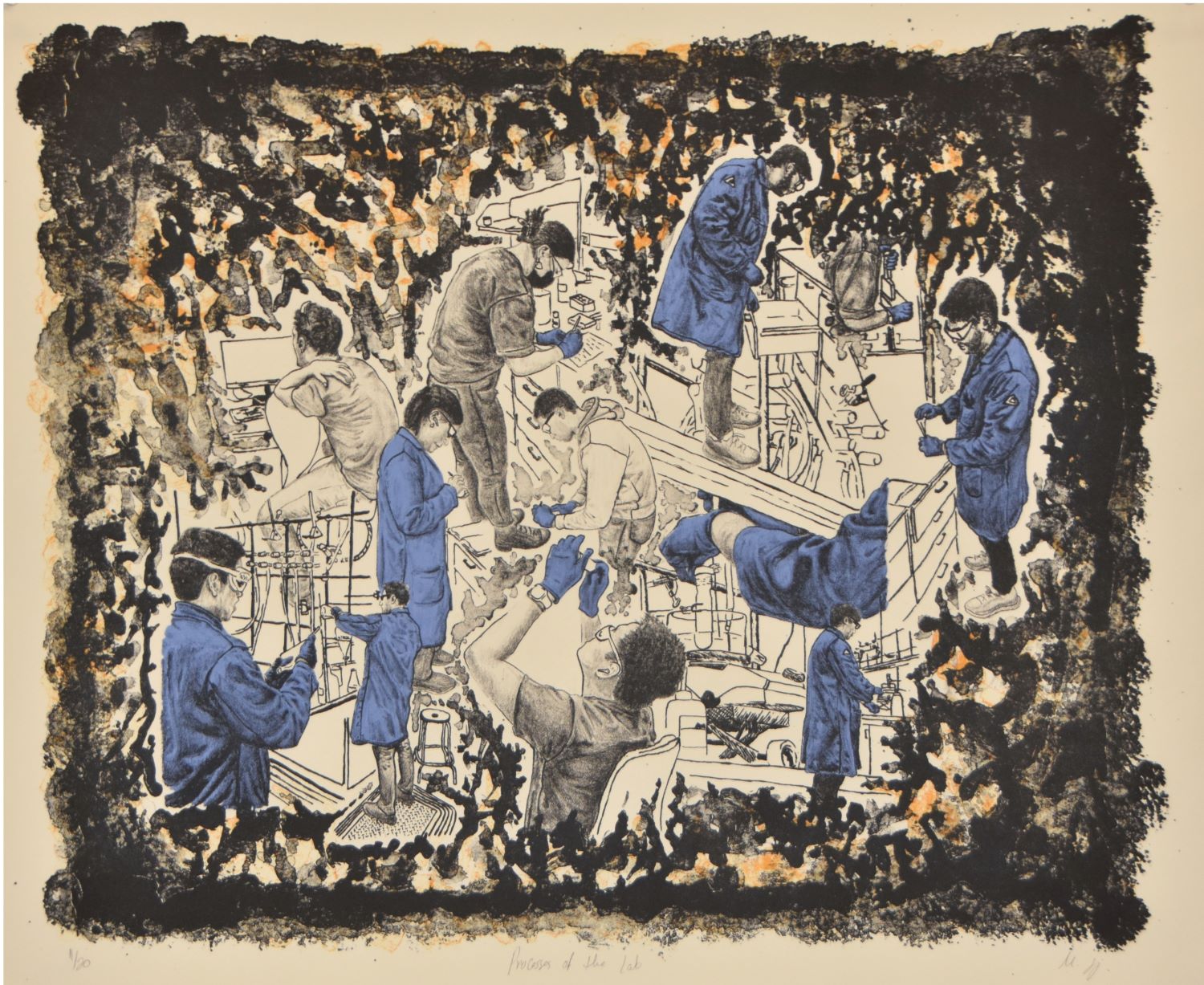2024 Best in Printmaking – Max Hrigora

Processes of the Lab
“Processes of the Lab” was created using lithographic techniques, some of which are chemical processes themselves (etching the stone with acid, the concept of hydrophobicity being essential to printing, etc). The figures represented in the work were drawn using photos I took of my old labmates as my reference images. In the bottom left, Evan pours a crude reaction mixture into a sep funnel; next to him, Gonzalo shakes a sep. funnel to work up his reaction. On the bottom, in the middle, Dan holds up a centrifuge tube, and Luke, just above the tube, jots down a quick note. Other actions depicted include: putting starting material into a flask, pipetting some solution into a well-plate for a biocatalysis reaction, logging stuff in a lab notebook, setting up a reaction, and looking at mass spectrometry data on the computer. Inspired by collages, I drew the figures and bits of their surroundings such that they overlap into each other; I feel that this effect helps with guiding the eye around the image. Ease of flow is important to the overall concept of the piece – each action (process, if you will) is related to another shown elsewhere in the lithograph. There is a certain order to how one does things in the lab, which is what I wanted to capture here.
Each color was printed using a separate layer. I first printed the orange, seen around the borders, then the blue for the figures’ lab coats and gloves; these two colors were printed using ball-grained aluminum plates. Lastly, the black work was printed. The black came from drawing on a large piece of limestone with greasy crayons, autographic ink, and tusche (greasy particles suspended in water). Twenty prints were produced, most of which were given to the labmates depicted in this piece.
